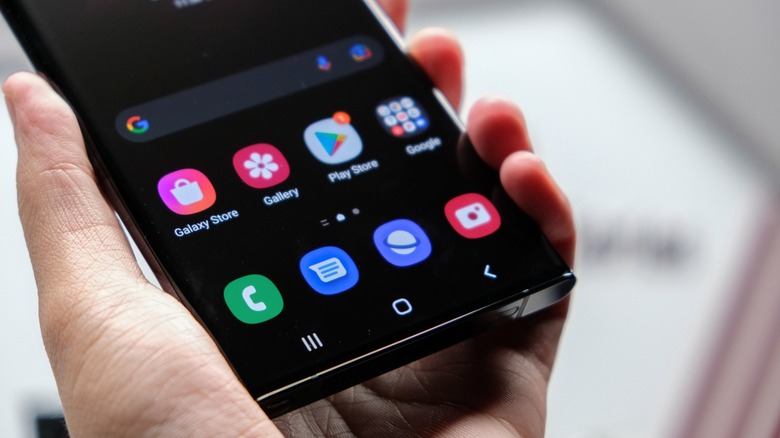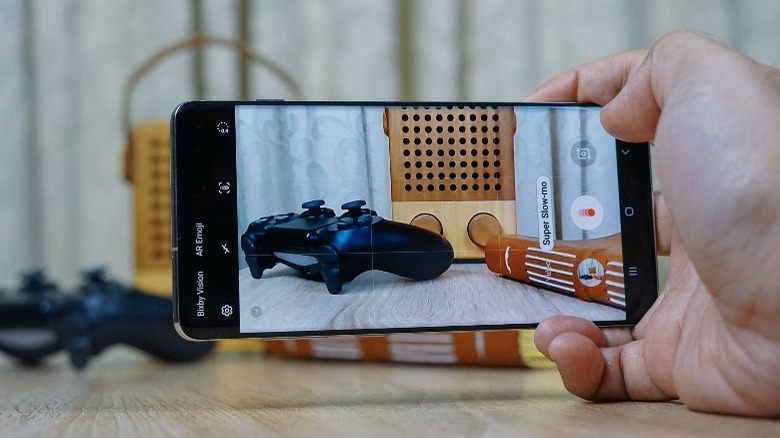Changing This Setting Will Help You Save Space On Your Samsung Galaxy
We may receive a commission on purchases made from links.
Samsung's Galaxy phones have become some of the most popular Android devices around, in no small part thanks to outstanding camera performance. One fatal flaw in Samsung's more recent flagship models is the lack of expandable storage via a microSD card. Not too long ago, this was one of the features that set Samsung and other Android phone makers apart from Apple, which is notorious for its closed ecosystem and lack of expansion and customization. Nowadays, only a scant few manufacturers like Sony and ASUS bother with microSD expansion, which is a problematic trend, considering smartphones are becoming more and more centered around the camera experience for many people.
As any shutterbug knows, smartphone internal storage fills up with images and videos in a hurry, thanks to the inefficient image storage codecs we've been using for decades. Fortunately, The Motion Picture Experts Group (MPEG) already has a solution to the bulky JPEGs hogging all your space.
Apple got it right with HEIF images
The HEIF (High Efficiency Image File) and HEVC (High Efficiency Video Coding or H.265) formats were introduced in 2015, according to FileInfocom. While Apple's lineup of iPhones was the first major smartphone to make use of the new formats, many have since followed suit, including Samsung.
According to Adobe and Haivision, both the new video and image formats retain or improve image quality and increase flexibility, while reducing the overall file size by offering more efficient compression. Although the compression is still lossy, more information can be stored in the same space, or the same information can be stored in less space.
If you're using a Samsung Galaxy device, simply open the Camera app, tap the Settings ("gear") icon, and check the option titled "High efficiency pictures," and then enable "Reduce file size" under Video, to enable the HEIF image format and HEVC video format. Samsung doesn't publish any information about how it has implemented HEIF or HEVC on its various Galaxy devices — most likely, the implementations and features used depend on the specific device in question — but using HEIF and HEVC can net around a 50% space saving, as well as a potential quality boost. What's the catch? Since the formats are newer, sharing HEVC and HEIF files might require conversion. While Android, macOS, Windows, and Linux can all open HEIF images, you might need to install a codec to do so.

